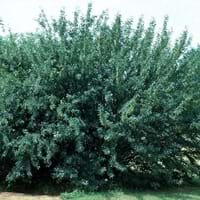Life Span
Perennial
Perennial
Origin
Caribbean, South America
Russia/Siberia, China
Types
Pinks Mammoth, African Pride, Late Gold, Geffner, Hilary White
Dwarf Siberian Peashrub, Sutherland Peashrub, Weeping Siberian Peashrub
Number of Varieties
Not Available
Habitat
Warm and moist climatic conditions
Forest edges, gully slopes, Open Forest, Riverbanks, Sandy areas
USDA Hardiness Zone
10-13
2-8
Sunset Zone
Not Available
A1, A2, A3, 1a, 1b, 2a, 2b, 3a, 3b, 4, 5, 6, 7, 8, 9, 10, 12
Habit
Upright/Erect
Narrow Upright/Fastigiate
Flower Color
Yellow green
Yellow
Flower Color Modifier
Bicolor
Not Available
Fruit Color
Light Green, Sea Green
Brown
Leaf Color in Spring
Light Green
Light Green
Leaf Color in Summer
Light Green
Light Green
Leaf Color in Fall
Light Green
Light Green, Light Yellow
Leaf Color in Winter
Light Green
Not Available
Leaf Shape
oblong or narrow-lanceolate
Pinnate
Plant Season
Summer
Spring
Sunlight
Full Sun, Partial Sun
Full Sun
Type of Soil
Loam, Sand
Clay, Loam
The pH of Soil
Acidic, Neutral, Alkaline
Acidic, Neutral, Alkaline
Soil Drainage
Well drained
Well drained
Bloom Time
Early Summer, Summer
Spring
Tolerances
Drought
Drought, Salt
Where to Plant?
Container
Ground
How to Plant?
Seedlings
Cuttings, Layering, Seedlings
Plant Maintenance
Medium
Low
Watering Requirements
Do Not over Water, Does not require regular watering
Keep the ground moist but not water-logged, occasional watering once established
In Summer
Lots of watering
Moderate
In Spring
Moderate
Ample Water
In Winter
Average Water
Average Water
Soil pH
Acidic, Neutral, Alkaline
Acidic, Neutral, Alkaline
Soil Type
Loam, Sand
Clay, Loam
Soil Drainage Capacity
Well drained
Well drained
Sun Exposure
Full Sun, Partial Sun
Full Sun
Pruning
Prune young trees into an open vase shape
Remove dead branches, Remove dead or diseased plant parts
Fertilizers
Nitrogen
fertilize in spring
Pests and Diseases
Anthracnose, Diplodia rot, Leaf spot
blister beetles, Septoria leaf spot, stem decay
Plant Tolerance
Drought
Drought, Salt
Flowers
Insignificant
Yes
Flower Petal Number
Single
Single
Foliage Texture
Medium
Fine
Foliage Sheen
Matte
Matte
Attracts
Fruit Bats
Bees, Hummingbirds
Allergy
Oral Allergy
Diarrhea, Vomiting
Aesthetic Uses
Not Used For Aesthetic Purpose
Not Used For Aesthetic Purpose
Beauty Benefits
Promotes Healthy Hair, Promotes healthy skin
used as a dye
Environmental Uses
Air purification
Erosion control, Fixes Nitrogen, Food for animals, Shelter for wildlife, Windbreak
Medicinal Uses
Diabetes, Diarrhea
Cancer, Dysmenorrhea, Gynaecological
Part of Plant Used
Bark, Fruits, Seeds
Leaves, Seeds
Other Uses
Used to make hair tonic, Used to promote healthy blood flow during menstruation
Fibre, For making oil, Shelterbelt, Used as a dye, Used for making informal hedge
Used As Indoor Plant
No
No
Used As Outdoor Plant
Yes
Yes
Garden Design
Fruit / Fruit Tree, Shade Trees, Tropical
Hedges, Mixed Border, Screening, Wind Break
Botanical Name
ANNONA squamosa
CARAGANA arborescens
Common Name
Sugar Apple
Siberian peashrub, Siberian pea-tree, caragana
In Hindi
सीताफल
Siberian peashrub
In German
Zuckerapfel
Gemeiner Erbsenstrauch
In French
Sugar Apple
Caraganier de Sibérie
In Spanish
Manzana de azúcar
Siberian Peashrub
In Greek
ζάχαρη της Apple
Siberian Peashrub
In Portuguese
Pinha
Siberian peashrub
In Polish
Cukier Jabłko
Karagana syberyjska
In Latin
Sugar Apple
Siberian Peashrub
Phylum
Magnoliophyta
Magnoliophyta
Class
Magnoliopsida
Magnoliopsida
Order
Magnoliales
Fabales
Family
Annonaceae
Fabaceae
Clade
Angiosperms, Magnoliids
Angiosperms, Eudicots, Rosids
Tribe
Abreae
Not Available
Subfamily
Maloideae
Not Available
Number of Species
Not Available
Not Available
Importance of Sugar Apple and Siberian Peashrub
Want to have the most appropriate plant for your garden? You might want to know the importance of Sugar Apple and Siberian Peashrub. Basically, these two plants vary in many aspects. Compare Sugar Apple and Siberian Peashrub as they differ in many characteristics such as their life, care, benefits, facts, etc. Every gardener must at least have the slightest clue about the plants he wants to plant in his garden. Compare their benefits, which differ in many ways like facts and uses. The medicinal use of Sugar Apple is Diabetes and Diarrhea whereas of Siberian Peashrub is Cancer, Dysmenorrhea and Gynaecological. Sugar Apple has beauty benefits as follows: Promotes Healthy Hair and Promotes healthy skin while Siberian Peashrub has beauty benefits as follows: Promotes Healthy Hair and Promotes healthy skin.
Compare Facts of Sugar Apple vs Siberian Peashrub
How to choose the best garden plant for your garden depending upon its facts? Here garden plant comparison will help you to solve this query. Compare the facts of Sugar Apple vs Siberian Peashrub and know which one to choose. As garden plants have benefits and other uses, allergy is also a major drawback of plants for some people. Allergic reactions of Sugar Apple are Oral Allergy whereas of Siberian Peashrub have Diarrhea and Vomiting respectively. Having a fruit bearing plant in your garden can be a plus point of your garden. Sugar Apple has no showy fruits and Siberian Peashrub has no showy fruits. Also Sugar Apple is not flowering and Siberian Peashrub is flowering. You can compare Sugar Apple and Siberian Peashrub facts and facts of other plants too.





